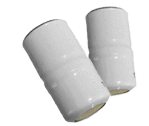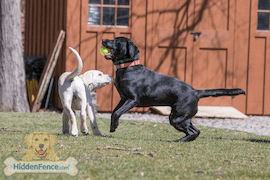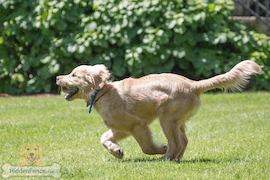Call/Text (973) 442-1111
Hidden Fence Company Customer Support and Service
Hidden Fence How-to Guides
General Self-Help Fence Troubleshooting Tips:
Is your dog escaping or challenging the fence often?
Is the wire break alarm sounding from your fence transmitter?
Do the receiver batteries appear to be dead?
Are the lights on the fence transmitter out?
If you’re experiencing any of these issues, you might be able to troubleshoot the problem yourself by following our handy step-by-step troubleshooting method.
Step by step, you can find your issue here…
First, check to see if your receiver collar beeps at the edge of the yard.
The easiest place to know and test where the boundary wire is located is probably your driveway. The collar should beep about 4-6 inches from the wire.
If it beeps, then we know:
- The batteries are still good.
- The transmitter is sending out its signal.
If you are troubleshooting an escape problem and are in this situation, you are fortunate – there are only a few possibilities left:
- collar too loose (by far, the highest odds left)
- collar beeping but not shocking (rare, but not impossible)
- collar shocking but set too low
(unlikely if training was completed and dog has been avoiding fence consistently for a period of time)
If the collar is too loose:
There are several key things to check regarding collar contact. Keep in mind that long hair and or thick undercoats increase the chances your problem will be with collar contact.
(collar should be close to chin and by ears, because that is the thin part of your dog’s neck)
Here is a collar contact test and solution by a long-time fence professional:
- Be sure to have the collar snug, and sitting fully forward on the neck (at the ears) by pulling the fat and fur backwards using your left hand, (towards the tail), AND, with your right pointer finger, pulling the nylon forward at the top of the neck.
- Next (and MOST IMPORTANT), gather and pull the (underside) fat and fur of the neck backwards towards his tail, pull the receiver box away from the neck AND forward towards the nose – RELEASE the receiver/collar first and THEN release the fat and fur.
- Now, REMOVE ENOUGH SLACK, to provide a light contact with the PROBES TO SKIN. This will ensure that the collar is held and pushed fully forward towards the SMALLEST CIRCUMFERENCE AREA, disallowing movement, and therefore, collar-loosening. Lets call it the “‘FAT FREE’ Collar adjustment technique”! This allows a more consistent light connection with the neck, making sure that the correction level raising during training remains incremental to your pets’ experience and it will help keep a high level of respect for the fence by your pet in the future .
If you are having problems with contact, we highly recommend using spring loaded probes to help get through thick under coats.
As with any collar, do not leave it on longer than 12 hours at a time in the same position to avoid causing neck sores.
If it does beep, but only VERY close to the wire:
- There may be a problem with your wire.
If the collar beeps, but only very close to the wire, this is often an indication of damaged or deteriorating wire that is not broken all the way through yet.
Also, check the status of your wall-mounted transmitter to be sure that it’s plugged in.
- The transmitter light should be on, Pet Stop® transmitters should read a number (average = 12).
- If the alarm on the wall-mounted transmitter is sounding, then you have a broken wire.
If it does not beep:
- When did you last replace the batteries? You might need to purchase new batteries.
Another check worth doing (if there is no beep at the wire) is to move the receiver close to the transmitter and see if you can get a beep – that would show a live battery and active collar.
Contact Hidden Fence
Purchase Replacement Batteries Here
Purchase replacement batteries for your Pet Stop® receiver collars.
Invisible Fence® compatible batteries are also available!






